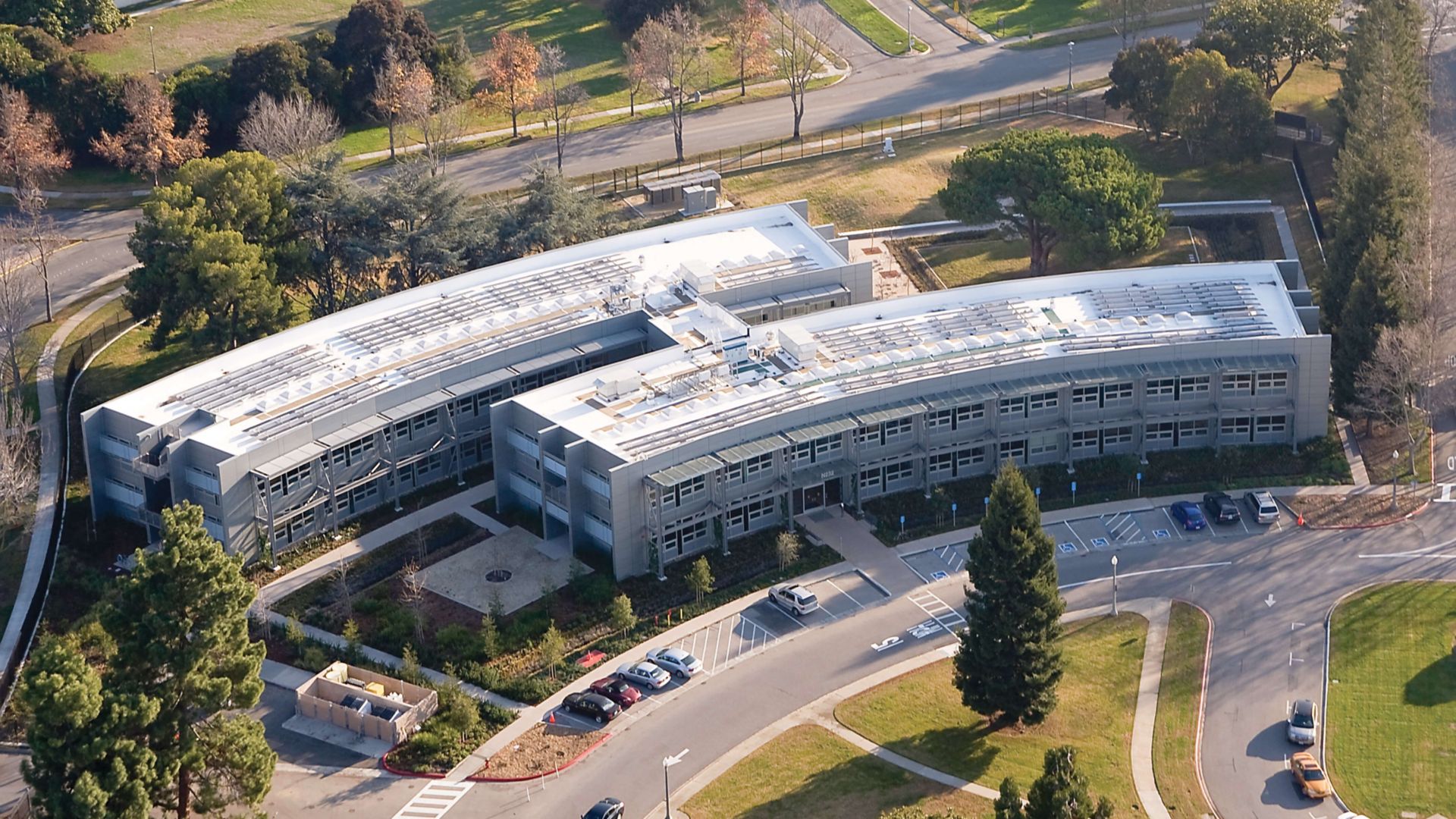2016
Moffett Field, California
Sika Roof Part of Nasa's Latest Mission on Earth
Outer space is not the only area where NASA does research. In fact, the Sustainability Base at NASA Ames Research Center in Moffett Field, California is testament to research NASA is doing right here on earth. Considered to be the “greenest” federal building in existence, the 50,000-squarefoot, two-story, lunar-shaped building is designed to be “a workplace, a showcase for NASA technology and a living prototype for future buildings,” according to NASA. “It is NASA’s latest mission on earth.”
About 200 NASA employees work at the Sustainability Base, which NASA sees as a prototype of what a 21st-century building should be. “The building and its site are designed not only for planetary well-being, but also for human physical and emotional health,” NASA’s website states. “The elements for human wellbeing include plentiful fresh air, daylight, outdoor workspaces, views of nature, natural shading, nontoxic building materials and a variety of greenery.”
The facility is LEED® platinum certified and designed to be “net energy positive,” which means it generates more energy than it consumes. To this end the Sustainability Base has a narrow width (54 feet) to allow daylight to reach desks in the middle of each floor, and windows that can be opened for natural ventilation. Electric power is generated by on-site photovoltaic solar panels and solid oxide fuel cell technology from a Bloom Energy Box (developed for a NASA Mars project). There are also 106 geothermal wells supporting a ground source heat pump system, and a water recovery system filters water used to flush toilets and urinals.
Owner
NASA
Roofing Contractor
Alcal Specialty Contracting, Inc.
Fremont, California
Design Architect
William McDonough + Partners
San Francisco, California
Architect/ Engineer of Record
AECOM
Orange, California
General Contractor
Swinerton Builders
San Francisco, California
Roofing System
Mechanically attached Sarnafil EnergySmartRoof
using 60 mil S 327 membrane in White
Project Size
25,000-square feet
A Roof Light Years Ahead
Selecting an energy efficient roof for Sustainability Base led the architect to a reflective, light colored single ply membrane with solar panels. “We typically specify white roofs because those roofs have a high reflectance rating, and therefore lower heat gain,” said June Grant, AIA, associate principal at AECOM of San Francisco. “Instead the light color acts like a mirror and bounces the heat rays back, keeping the building cool.” One white roof which the NASA Ames Research Center is very familiar with is the Sika Sarnafil EnergySmart Roof. This vinyl roof is heat-weldable, creating seams that are as strong as the membrane itself. The membrane is a proven performer, due to more than 50 years in the field, and its light, reflective color, as Grant pointed out, reduces air conditioning costs. “We’ve specified the Sarnafil roofing systems before and they have all performed well,” Grant added.“
This is NASA’s preferred roofing system,” explained Mark McAtee, estimator and project manager at Alcal Specialty Contracting of Fremont, California. “They have a great relationship with Sika Sarnafil, which is why the majority of the roofs at the Ames Research Center are Sarnafil roofs.”
“This is NASA’s preferred roofing system,” explained Mark McAtee, estimator and project manager at Alcal Specialty Contracting of Fremont, California. “They have a great relationship with Sika Sarnafil, which is why the majority of the roofs at the Ames Research Center are Sarnafil roofs.”
A Problem Free Installation
Installation of the 25,000 square foot roof was pretty straight-forward, McAtee said. “It took about one month for our six-man crew to install the roof on the Sustainability Base,” he remarked. “We had also just purchased a window and glazing company so we did that work as well.”
“I liked that Alcal could do the entire building envelope, including the roof and windows,” said Jack Carter, project executive at Swinerton Builders of San Francisco, California. “We have a long-standing relationship with Alcal and know they are very proficient at installing the Sika Sarnafil roofing systems,” he explained. “We’ve had very positive working experiences with both companies and find Sika Sarnafil to be very responsive to our needs.”
“Sika Sarnafil in-progress inspections are always helpful,” McAtee added. “We really like Sika Sarnafil products and technical support. That’s why we always recommend Sika Sarnafil systems.”
After the roofing membrane was put down the solar array panels were then installed. “The solar panels used a combination of mounting techniques. The solar panels were attached and anchored to the I-beams underneath the roof deck, which required penetrating the roof. Fortunately, the Sarnafil system is easy to reseal,” said David Wong, utilities manager at Ames Research Center, Facilities Engineering Branch. “The solar panels were also self-ballasted to prevent them from catching the wind and sliding around.” In a typical year, the solar panels are expected to generate about one third of the Sustainability Base’s electricity needs.
After the roofing membrane was put down the solar array panels were then installed. “The solar panels used a combination of mounting techniques. The solar panels were attached and anchored to the I-beams underneath the roof deck, which required penetrating the roof. Fortunately, the Sarnafil system is easy to reseal,” said David Wong, utilities manager at Ames Research Center, Facilities Engineering Branch. “The solar panels were also self-ballasted to prevent them from catching the wind and sliding around.” In a typical year, the solar panels are expected to generate about one third of the Sustainability Base’s electricity needs.
Mission Accomplished
Today the Sarnafil roof on the NASA Sustainability Base is performing according to plan, and has survived several winters with no problems.
“Sustainability Base is just finishing up its commissioning period,” said Steven Zornetzer, associate center director for research and development at the NASA Ames Research Center. “To date, the building’s roof has performed as expected. It provides excellent reflectivity and all indications are that it will meet our expectations for durability.”

